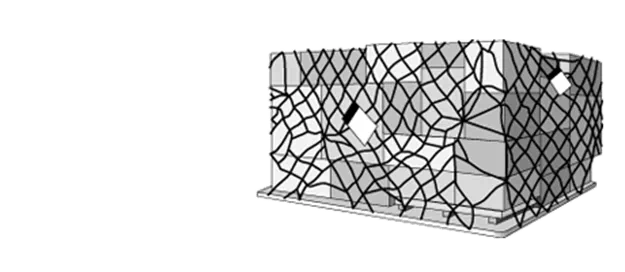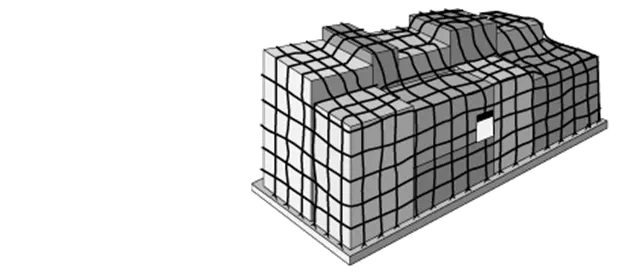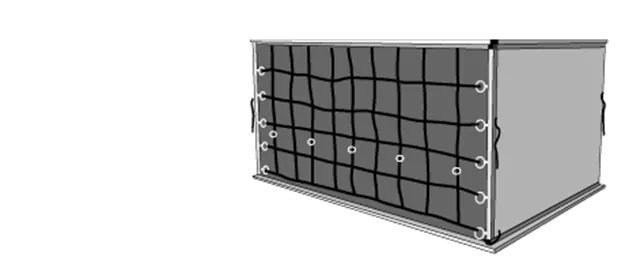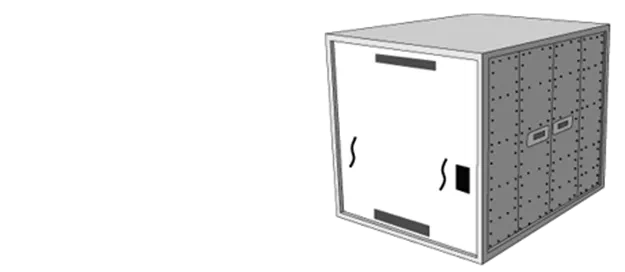Unit load devices
For air freight, airline pallets or air containers need to be designed for the fuselage of each aircraft type and are known as ULDs (Unit Load Devices). These different airline pallet sizes make optimal use of the space available as well as making loading and unloading easy and fast.
The International Air Transport Association (IATA) is the lead agency in the transportation industry in terms of technical specifications for Unit Load Devices.
Plates or aerial pallets: These are flat metal surfaces that are usually made of aluminum, on which the goods are tied down using nets or meshes to hold the cargo securely in place during flight. The stowage of the goods can be adapted to the contour of the plane's hold so as to make the best use of the available space.
Containers: They are the equivalent of sea containers, but there is a greater variety of shapes and sizes because of the different aircraft used. There are also different types of containers depending on purpose, such as refrigerated, lateral opening, airtight or ventilated.
The dimensions and weights of the Unit Load Devices as well as the rules and regulations for their use are subject to the terms and conditions of each particular airline.
ULD identification codes
Each air freight container or pallet has a unique alphanumeric code number shown on it for identification and to provide information about its technical specifications.
Each identification code consists of 10 alphanumeric elements that follow the sequence below:
| Position | Character | Description |
|---|---|---|
| 1 | Alphabetical |
Type of ULD |
| 2 | Alphabetical |
Base dimensions |
| 3 | Alphabetical | Contour or compatibility |
| 4, 5, 6, 7 and 8 | Numerical |
Numeric Serial number |
| 9 and 10 | Alphanumerical |
Owner |
Positions 1,2,3 - Three-letter prefix
- The first letter indicates the type of air container, for example the A, is “Certified Aircraft container”
- The second letter refers to the dimensions of the base of the container. For example, "K" means that the measures of the container are 1.534x1.562m2
- The third character indicates two different things depending on whether it is a container or a pallet. When it is a container, it determines its shape, contour and load capacity. When it is a pallet, it refers to the type of network, mesh or execution system used.
Positions 4, 5, 6, 7 and 8 - Serial number
Numerical code that identifies each specific container, which could match the number of another container of different owner. For this reason, it is important to pay attention to the last two positions (9 and 10), which are the owner's code.
Positions 9 and 10 - Owner code
These characters can be alphanumeric and indicate the owner or airline.

Legend
- 6 Technical specifications: plates with technical information with official seals and approvals, such as DGR badges, and other optional items such as the airline logo, special indications on weight and dimensions, etc.
- 7 Documentation pocket: documentation that accompanies the container throughout its transit.
The most frequently used containers in air transport
Any questions?
Our experts are ready to help. Get in touch and we'll find the solution you need.








